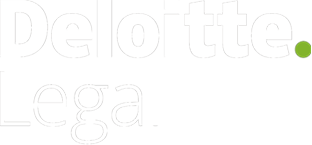If At First You Don't Find A Balanced Regulatory Model - Try, Try, Again.
Much of the history of regulation is one of reaction rather than pro-action. An example: In the early days of the automobile, a spate of pedestrian deaths prompted a campaign that eventually led to the first rules against jay-walking, ensuring that between intersections at least, the roads belonged first and foremost to cars.
Other examples abound. From health care to banking, from the military to education, regulations are almost always the product of something gone wrong (or the anticipation thereof) and the government’s response to it.
As a model for bringing in regulations to help keep people and their assets safe, this one has been largely effective. However, in the future, regulators may no longer be able to rely on this reactive approach, especially as faster, more scalable technologies are leading to more aero-dynamic business eco-systems, making it more difficult for regulators to keep up.
Playing catch up
Regulators are often faced with the challenge of having to catch up to new disruptive businesses. Uber and AirBnB are prominent examples. In their relatively short lives, they have had major impacts on the transit and hospitality industries in cities around the world. The speed of their entry into these markets has been a challenge for regulators who have already established frameworks with more traditional providers of transit (i.e., taxis) and hospitality (i.e., hotels).
Regulators have scrambled to respond—and sometimes that response has been severe. In Copenhagen regulators mandated that taxis should have seat sensors, video surveillance, and taxi meters, all regular features of traditional taxis but less common in the cars belonging to Uber drivers. Uber responded by pulling out of the market. While Danish taxi drivers are pleased, Uber drivers and their customers miss out.
A more nuanced approach
A more effective regulatory model may be found when the innovators and regulators find a balance. For example, in Portugal an innovative compromise was struck when Uber agreed to use the shared mobility platform of the city in return for cooperation on licensing. Perhaps coincidentally (or perhaps not) Uber recently announced that Lisbon would be the site of its Center for Excellence in Europe, creating jobs and revenue for the city.
Blunt instruments may not be necessary if different stakeholders—tax authorities, zoning boards, by-law enforcement—work together to envision and respond to disruptive change when it comes. In fact, some agencies are already taking a pro-active approach by issuing statements that anticipate where new technologies may run up against existing regulations. This will help guide entrepreneurs as they contemplate entering a marketplace.
You can’t predict the future, but best to be ready for it
Anticipating all the variables of a disruptive technology is about as easy as predicting the future. That is to say, not very easy at all. However, regulators can help ease the process by thinking more dynamically and maintaining open and frank dialogue with entrepreneurial tech companies.
The features that gave these disruptive technologies such massive impact—speed and scalability—will be the features of new technologies for years to come, especially as the intersection of artificial intelligence, advanced analytics, and human behavior becomes more prominent in our day-to-day lives. It is vital that regulators and entrepreneurs open up the channels of communication now so that both sides are ready for the future and whatever it brings.
I invite you to explore more future technologies that will impact the regulatory balance.
By Mike Turley, Government & Public Services Global Leader

